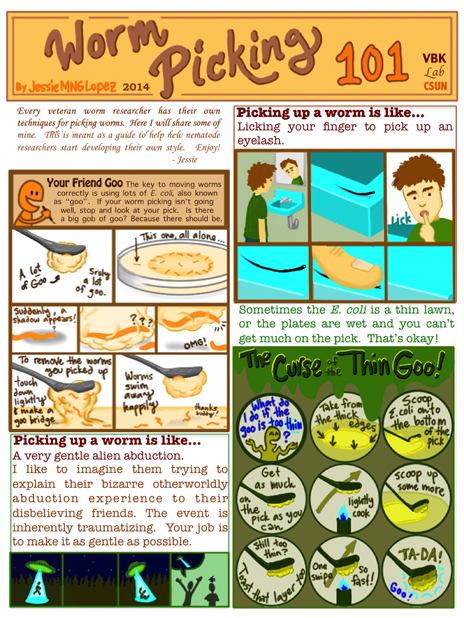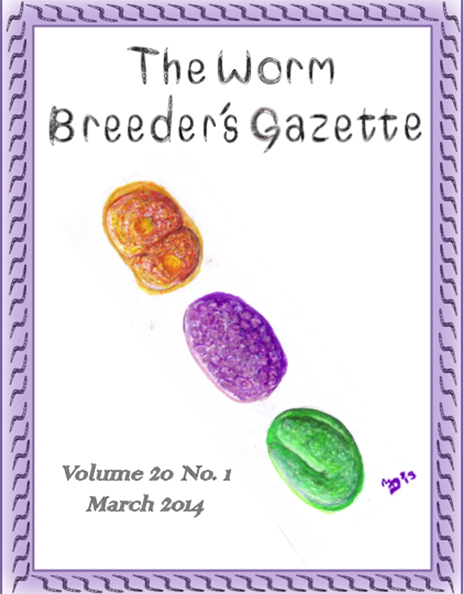My laboratory was established in the Department of Biological Sciences at the Florida Institute of Technology in August 2014. We are interested in the basic biological questions of how organisms sense their environment and respond to stress. Our focus is on the heat shock response (HSR) due to its important roles in normal growth and its involvement in human diseases including neurodegenerative diseases and cancer. We are identifying mechanisms of action for novel regulators of the HSR, exploring the basis for HSR tissue-specificity, and extending our findings from C. elegans using cultured human cell lines. We currently have openings for undergraduate, masters, and doctoral students.
New lab announcement: David Q. Matus at Stony Brook University
The Matus lab opened its doors in January 2014 at Stony Brook University in the Department of Biochemistry and Cell Biology. We are the first official C. elegans lab on campus! Our laboratory is broadly interested in trying to understand how morphogenetic events are programmed during development, how these processes evolve between species and how they might go awry during pathogenic events such as cancer. We use nematode uterine-vulval attachment as a model to understand how cells acquire the ability to breach the basement membrane, an ancient form of extracellular matrix unique to the animal kingdom. Specifically, we are interested in identifying transcription factors and their targets that program cell invasive behavior in C. elegans and related nematode species. Please visit our website at: you.stonybrook.edu/matuslab/
Interested PhD students should contact me directly and I can provide more information about Stony Brook University graduate programs. Please check our website for potential postdoctoral opportunities as they may arise. We look forward to hearing from you and seeing you at meetings!
Back Cover: Worm Picking 101

View the full size version.
Cover Artwork: Elegant Genesis

Oil pastel on paper by Beverley Dancy. Worm lettering and border by Andrea Choe.
View the full size version.
Worm humor: Nematode news in brief
N1 still disgruntled over Brenner’s choice (Cambridge UK). Disproving the popular maxim that time heals all wounds, N1 made clear in a statement today that it is every bit as annoyed about not becoming the “chosen strain” as it was nearly 50 years ago. “Bristol had nothing on me then and it’s got nothing on me now,” said the visibly petulant Caenorhabditis elegans isolate obtained from Sidney Brenner’s backyard. “Mushroom compost? Give me a break,” added the derisive strain, referring to the humble origins of N2. According to N1, “It was totally political from the very beginning. These things always are. Anyway, it’s not like I really wanted to be prodded, mutagenized, starved, bleached and ultimately autoclaved by a bunch of sadistic scientists,” the transparently begrudging nematode added. “So the joke’s on you, N2. Hope you’ve enjoyed the last 50 years, because you’ve got a lot more of the same coming.”
Project dies peaceful death surrounded by loved ones (University of Davis, CA). Following a prolonged, uphill and often painful battle, NIH proposal GM052937 is finally at rest according to sources close to the proposal. Whereas the termination of the project came as something of a shock to its long-term collaborators, those closest to the revised R01 had expressed serious concerns in the months leading up to its death. “The signs were all there,” said one of the postdocs intimately familiar with the well-being of the project. “Insufficient preliminary data, a delay in publications, and a lack of connectivity to the aims. It was clear enough if you just looked.” The proposal’s brave but futile struggle was accompanied by emotions typical of end-of-project scenarios including a denial of experimental flaws, anger at reviewers and funding agencies, bargaining with editors, depression of summer salaries, and ultimately acceptance into a journal of significantly lower impact than was expected. Still, in all endings new beginnings may find their genesis. “It’s hard to know what lies beyond the mythical ‘great wall’,” stated one of the lead investigators after learning of the project’s demise. “Perhaps there’s nothing whatsoever. But maybe the Hindus have it right, and reincarnation awaits all things that pass.” As of press time, the project’s PIs were rumored to be heavily favoring the “theory of rebirth” in the form of an R21.
Worm theologians ponder meaning of ‘Pick of Fate’ (Petri dish). Ancient mythological narratives within the C. elegans community have long included fanciful tales of shining objects that descend from the sky, arbitrarily removing “chosen members” of the population. “Though it’s considered an ill omen to speak of, the Pick Gods must be appeased once in every generation,” proclaimed one worm elder, who spoke on condition of anonymity. Although reasons for the apparent sacrifices continue to elude the nematode clerics, it has been noted that virgin L4s appear to “please the giant gleaming spade” above all others. Some survivors of the choosing ceremony have reported approaching a bright light or flame. Still others claim that it is a form of alien abduction in which individuals are subjected to painful gonadal probing by a giant clear needle. Such survivors have described recovering consciousness on a completely different plate while smeared from nose to tail in a kind of viscous oily substance, possibly of an inter-dimensional or protoplasmic nature. Conspiracy theorists within the worm community have gone so far as to suggest that these individuals may have been “implanted” with a “seed of foreign origin”, although this theory remains controversial. Nevertheless, universal agreement behind the meaning of “Shovel Selection” is likely to remain unresolved. Stated one wizened post-gravid hermaphrodite, “We can only hope that a divine and loving intelligence is controlling the pick and that it does not merely represent the whims of some dispassionate cosmic manipulator.”